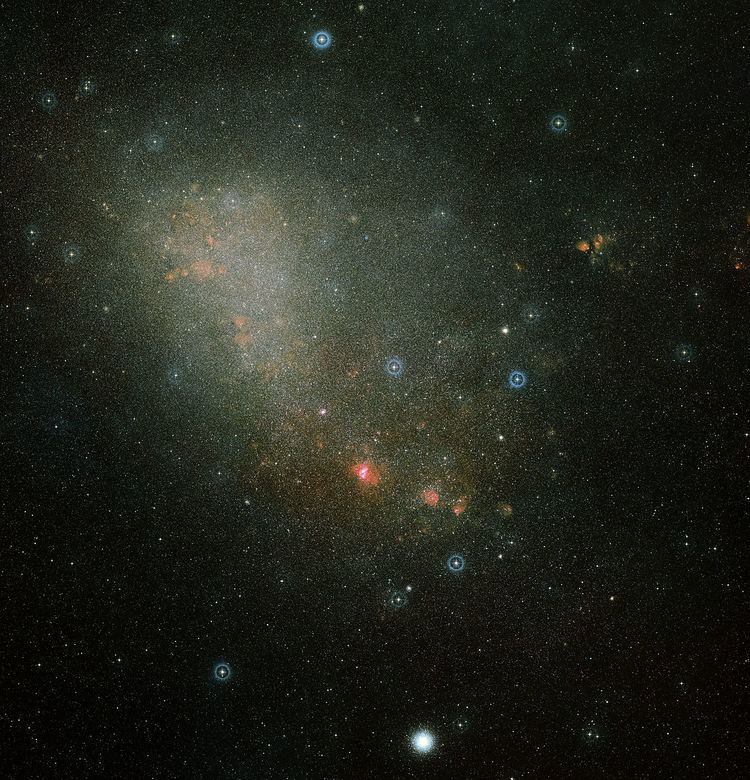Luminosity 200,000 L☉ | ||
 | ||
People also search for CK Carinae, Lambda Tucanae, Gliese 54 | ||
HV 11423 (PMMR 114/140 LI-SMC) is a star in the Small Magellanic Cloud galaxy that is part of the Local Group and it is one of largest stars.
Contents
Distance
It is about 200,000 light-years away towards the constellation of Tucana.
Visibility
HV 11423 is one of the brightest red supergiants neighboring galaxy. Its spectral type is variable, from K0-1I (December 2004), to M4I (December 2005), and back to K0-1I (September 2006). VLA file spectra show that in December 2001 the star was even colder (M4-5I). By contrast, in October 1978 and a year later, he appeared as a star of M0I type. The spectral type M4-5 is the later observed in a supergiant of the Small Magellanic Cloud; in fact, the temperature in that state is beyond the limit Hayashi, in a region of the Hertzsprung-Russell where the star would not be in hydrostatic equilibrium. When the star enters a forbidden region of the HR diagram, you should seek quickly recover the lost balance, which is consistent with the return type K only months after passing through the M4 type (December 2005).
Characteristics
HV 11423 is a large star, with an estimated radius over 1,000 times bigger than the sun. It is also a variable star with a variation band 2 magnitudes in V band but essentially constant K. It is listed in the General Catalogue of Variable Stars as a slow irregular variable, but a period of 720 days has been calculated, as well as a long secondary period of 1,817 days.
The bolometric luminosity ~300,000 times more than Sun, it appears to have remained unchanged. It is thought that the star is currently undergoing a period of intense instability, in which its effective temperature changes from 4,300 to 3,500 K in a time scale of months; V-band variability may be due primarily to variations in temperature as well as changes in the local extinction due to the creation and dissipation of circumstellar dust. It is speculated that the star may be nearing the end of his life.
